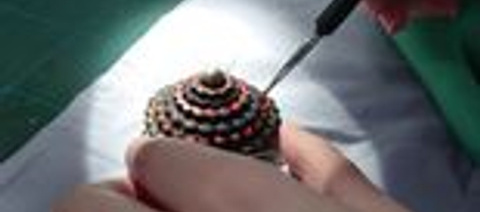Painted leather rosettes
Three painted leather bridle rosettes from Abergavenny Museum came into Cardiff Univeristy for conservation. I carried out a mixture of treatments depending on the individual needs of the rosette; cleaning, consolidating, humidifying and analysis.
What was the goal the project set out to achieve?
The main goal of this treatment was to stabilise the rosettes ready to go back on display at Abergavenny Museum and showcase the industries once present in and around Abergavenny.
To stabilise these rosettes a number of smaller objectives were put in place; the safely remove and dust/dirt/debry, to consolidates flaking paint and the striaghten out the leather ribbons.
What did I do?
To remove any dust/dirt a number of different methods were utalised, for one rosette the paint was very stable and therefore could be cleaned using a conservation vacuum, whereas for the other two the cleaning was completed using a very fine paintbrush first to removed loose dirt and then with IMS to clean the remaining dirt that had become trapped within the varnish layer. This varnish layer had yellowed over time, and was able to be removed at the same time as the dirt using the IMS. Next the flaking paint was consolidated using Paraloid B72 and a very fine paintbrush, using this same method and consolidant it was possible to re'varnish' the two rosettes. I then used an ultrasonic humidifier to lightly humidify the back/unpainted surface of the ribbons along with book weights to straighten them.
What was the outcome?
Following the successful treatment of each rosette, they are now clean and free of surface dirt, with a new coating layer to prevent flaking paint, with striaghtened ribbons and ready to go back on display at the museum.
What did I learn?
Being able to adapt and trust my instincts when carrying out conservation treatments. Along with how to approach the research into conservation treatments for mixed media items.
These were the first objects I conserved, they posed a challenge as they are multi-media items, consisting of leather, paint and metal. Each rosette had differing conservation needs, this lead to the need for a flexible overall treatment plan that could be utalised for one or more of the rosettes.

